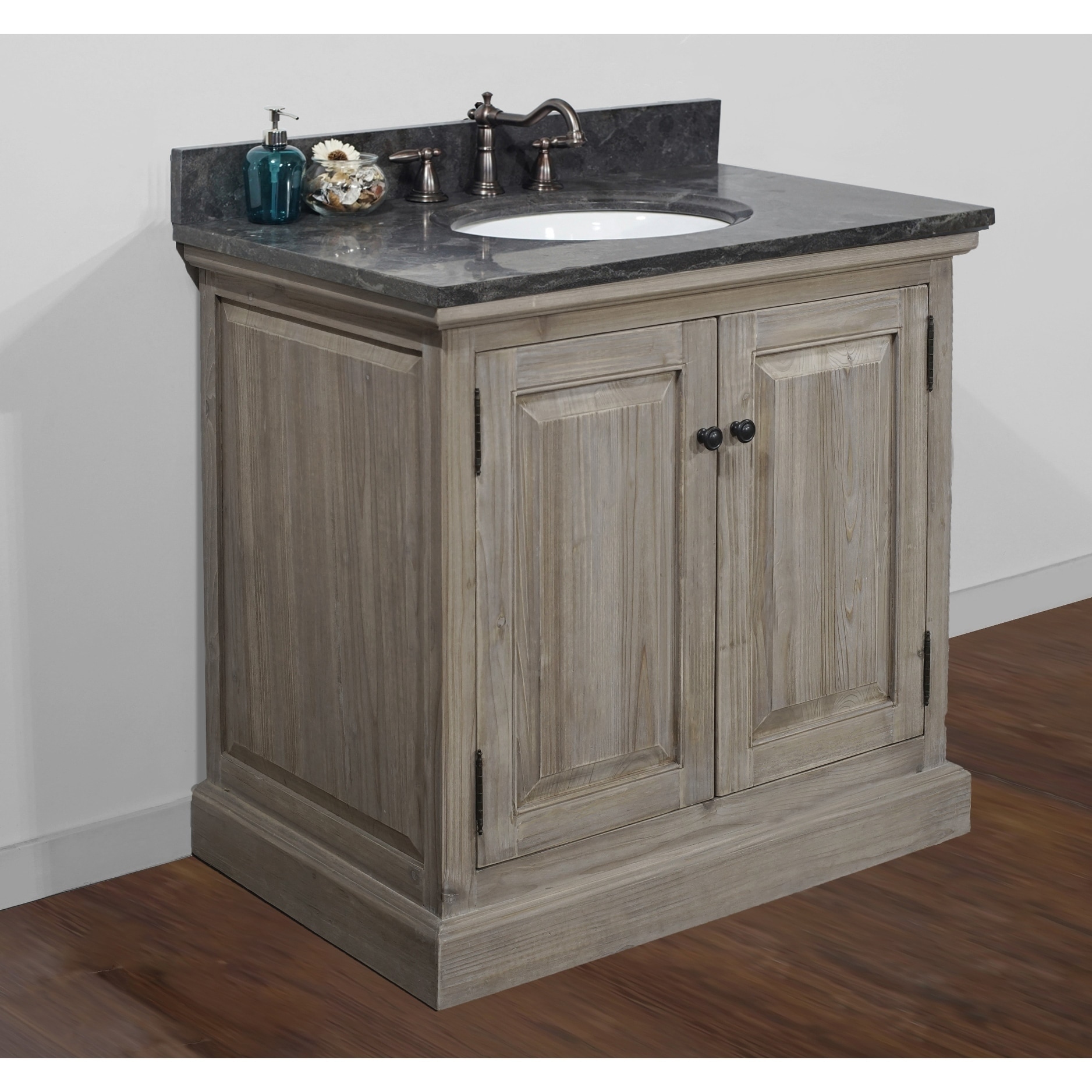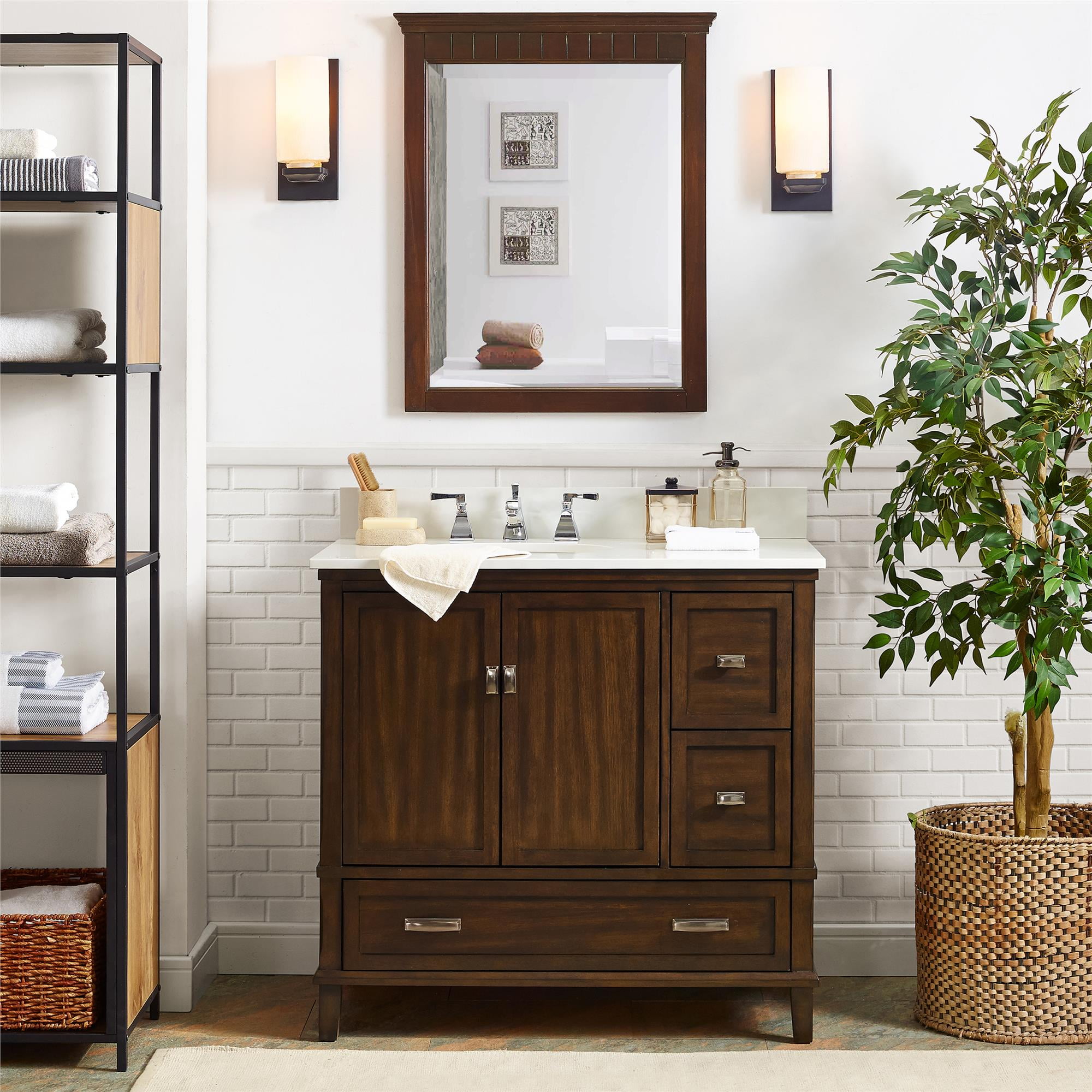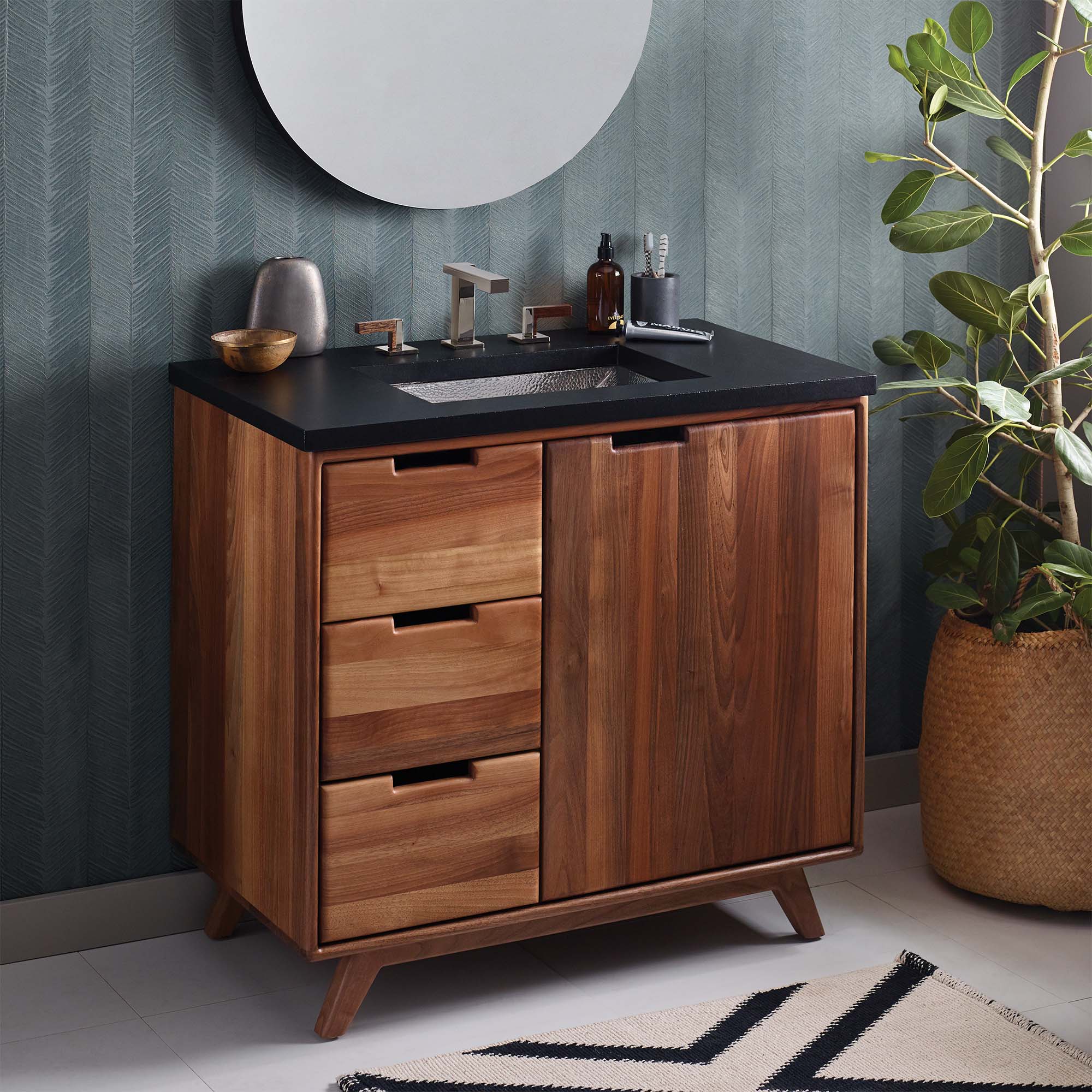The Advantages of a 36″ Tall Bathroom Vanity

A 36″ tall bathroom vanity offers a unique blend of style and functionality, providing a comfortable and accessible experience for users of all heights. This elevation can significantly impact the overall bathroom design and user experience, offering numerous advantages over standard height vanities.
Improved Accessibility and Comfort
A 36″ tall vanity promotes accessibility and comfort, particularly for individuals with mobility limitations or those who prefer a more ergonomic experience.
- Easier Access: The increased height makes it easier to reach the sink and countertop, reducing strain and discomfort, especially for those with limited mobility or height. This is particularly beneficial for seniors or individuals with back pain or arthritis.
- Improved Posture: A 36″ vanity encourages better posture while using the sink, reducing the need to bend or stoop. This can be particularly beneficial for individuals with back pain or those who spend a significant amount of time in the bathroom.
- Enhanced Comfort: The higher countertop provides ample space for personal care items, allowing users to comfortably access and organize their belongings.
Choosing the Right 36″ Tall Bathroom Vanity: 36 Tall Bathroom Vanity

Finding the perfect 36″ tall bathroom vanity is a delightful journey that combines style, functionality, and practicality. With so many options available, it’s essential to consider your bathroom’s unique personality, your storage needs, and the overall design aesthetic you envision. Let’s embark on this exciting exploration together!
Bathroom Styles and Vanity Choices
Choosing a 36″ tall bathroom vanity that harmonizes with your bathroom’s style is crucial for achieving a cohesive and visually appealing space.
- Traditional Bathroom: Embrace the elegance of a traditional bathroom with a vanity crafted from rich wood like cherry or mahogany. Look for intricate details like raised panels, ornate hardware, and a classic white or cream countertop. A pedestal sink or a vanity with a single basin and decorative legs will complement the timeless charm of this style.
- Modern Bathroom: A modern bathroom calls for clean lines, sleek surfaces, and a minimalist approach. Opt for a vanity with a simple, geometric design in materials like lacquered wood or high-gloss acrylic. A floating vanity with a rectangular vessel sink or a vanity with a seamless integrated countertop will enhance the contemporary feel.
- Contemporary Bathroom: Contemporary style embraces a fusion of modern and traditional elements. A vanity with a clean silhouette, perhaps in a natural wood finish, can be paired with a unique countertop material like concrete or quartz. A double basin vanity with a waterfall edge or a vessel sink with an interesting shape can add a touch of drama.
- Rustic Bathroom: Create a cozy and inviting atmosphere with a rustic vanity. Reclaimed wood, distressed finishes, and natural stone countertops are perfect for this style. A vanity with open shelving or a farmhouse-style sink will enhance the rustic charm.
- Industrial Bathroom: For a bold and edgy look, consider a vanity with metal accents, exposed pipes, and a dark countertop. A vanity with a concrete countertop, a black vessel sink, and industrial-style hardware will perfectly capture the industrial vibe.
Materials Used in 36″ Vanity Construction, 36 tall bathroom vanity
The material used for your 36″ vanity will significantly impact its durability, aesthetics, and overall cost.
- Wood: Wood vanities offer timeless elegance and a wide range of styles. Oak, maple, cherry, and walnut are popular choices for their durability and beauty. Solid wood vanities are more expensive but offer superior quality and longevity. Veneer vanities are more affordable, but the finish can be less durable.
- Laminate: Laminate vanities are budget-friendly and come in various colors and finishes. They are durable and easy to clean, but they can be prone to scratches and water damage. Choose a high-quality laminate for better resistance to these issues.
- Acrylic: Acrylic vanities are known for their smooth, glossy finish and easy maintenance. They are resistant to moisture and scratches, making them ideal for high-traffic bathrooms. Acrylic vanities are often lighter than wood vanities, making them easier to install.
- Metal: Metal vanities offer a sleek and modern look. Stainless steel and aluminum are popular choices for their durability and resistance to corrosion. Metal vanities are often more expensive than other materials but offer a unique and contemporary style.
Comparing 36″ Vanity Features
Let’s delve into the key features to consider when selecting a 36″ tall vanity.
| Feature | Options | Pros | Cons |
|---|---|---|---|
| Storage Options | Drawers, cabinets, shelves, open storage | Provides ample storage space for toiletries, towels, and other bathroom essentials. | Can limit the countertop space. |
| Countertop Materials | Granite, marble, quartz, laminate, concrete, wood | Offers various styles, durability, and resistance to moisture and stains. | Can be expensive, depending on the material. |
| Sink Styles | Undermount, vessel, drop-in, wall-mounted | Provides a variety of aesthetic and functional options. | Some styles may be more difficult to clean than others. |
Installing a 36″ Tall Bathroom Vanity

Installing a 36″ tall bathroom vanity can be a rewarding DIY project, adding a touch of elegance and functionality to your bathroom. With the right tools and a bit of patience, you can successfully install a vanity that will stand the test of time.
Preparing for Installation
Before diving into the installation process, it’s essential to gather the necessary tools and materials, ensuring a smooth and efficient installation.
- Tools: Level, tape measure, stud finder, pencil, drill, screwdriver, wrench, utility knife, safety glasses, work gloves.
- Materials: 36″ tall bathroom vanity, vanity top (if not included), sink (if not included), faucet, drain assembly, mounting hardware, silicone sealant, wood shims, plumbing supplies (pipes, fittings, etc.), electrical wire (if needed), electrical outlet cover.
36 tall bathroom vanity – Additionally, consider these essential steps:
- Turn off water supply: Locate the shut-off valve for your bathroom sink and turn it off. This will prevent any leaks or water damage during the installation process.
- Disconnect existing plumbing: Carefully disconnect the water supply lines and drain pipe from the existing vanity. Remember to use a bucket to collect any remaining water in the pipes.
- Remove old vanity: Once the plumbing is disconnected, remove the old vanity. This may require unscrewing mounting brackets or removing any decorative trim.
Installing the Vanity
Once you’ve cleared the space and gathered your materials, you’re ready to install the vanity. This involves a few key steps:
- Position the vanity: Place the vanity in its desired location, ensuring it’s centered and aligned with the wall. Use a level to check for evenness.
- Mark mounting points: Use a pencil to mark the wall where the vanity’s mounting brackets will be attached. Make sure the marks are level and aligned with the vanity’s holes.
- Attach mounting brackets: Drill pilot holes at the marked locations and secure the mounting brackets to the wall using appropriate screws. Remember to use a stud finder to locate wall studs for maximum support.
- Secure the vanity: Carefully lift the vanity and align it with the mounting brackets. Secure the vanity to the brackets using the provided screws. Use a level to ensure the vanity is perfectly level.
Plumbing and Electrical Considerations
Plumbing and electrical connections are crucial aspects of vanity installation.
- Plumbing:
- Connect water supply lines: Attach the water supply lines to the faucet and connect them to the shut-off valves under the sink. Tighten the connections securely, ensuring there are no leaks.
- Install drain assembly: Connect the drain assembly to the sink and connect it to the drain pipe. Ensure the drain is properly sealed to prevent leaks.
- Test for leaks: After connecting the plumbing, turn the water supply back on and carefully check for any leaks. Tighten any loose connections if necessary.
- Electrical:
- Connect electrical wires: If your vanity has an electrical outlet, connect the electrical wires to the outlet according to the manufacturer’s instructions. Ensure the wires are securely connected and the outlet is grounded.
- Test electrical connections: After connecting the electrical wires, test the outlet to ensure it’s working properly. Use a tester to check for voltage and ground.
- Install outlet cover: Securely install the outlet cover to protect the electrical connections.
Securing and Leveling the Vanity
Proper leveling and securing the vanity are essential for long-term stability and functionality.
- Leveling: Use a level to ensure the vanity is perfectly level in all directions. If necessary, adjust the vanity’s position or use shims to level it out.
- Securing: After leveling the vanity, tighten all mounting screws to ensure it’s securely attached to the wall. Double-check all connections for stability.
